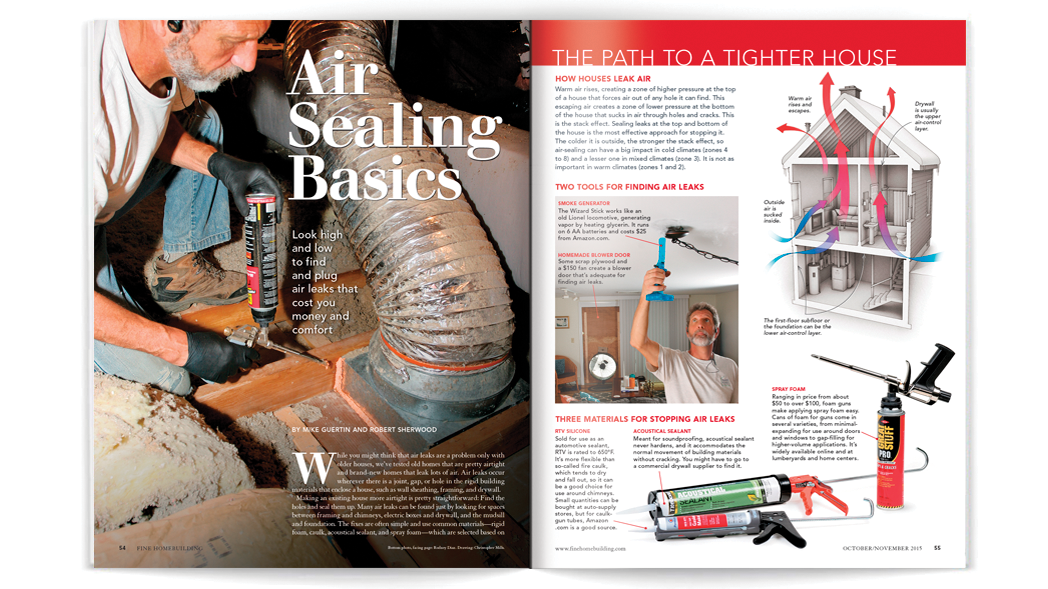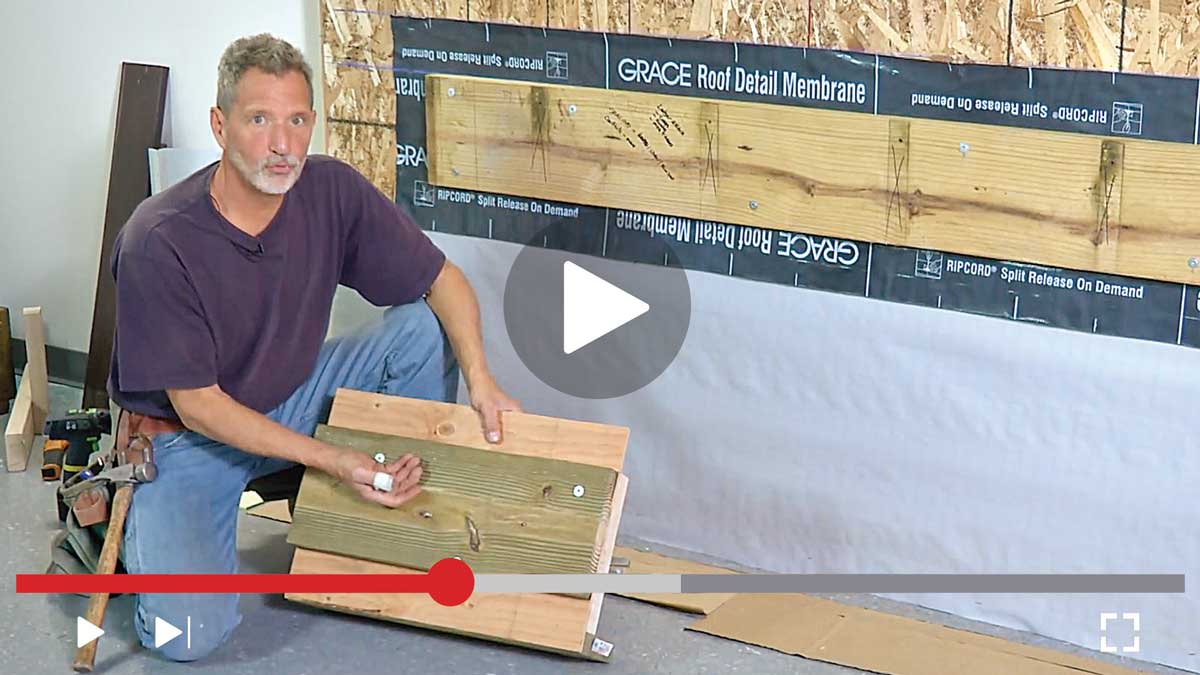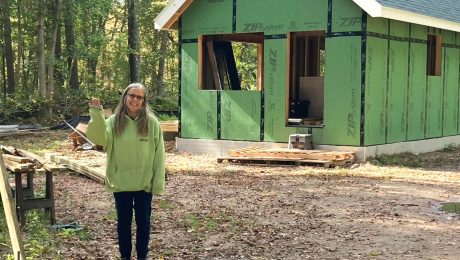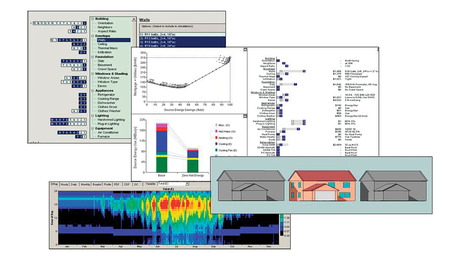Building a Knowledge of Building
Print and online publications, internet discussion boards, and an extensive network of tradespeople are all sources of tips, tricks, and techniques of the trade.

Synopsis: Mike Guertin has helped to educate and inspire a generation of builders through his work as an author of magazine articles and books, in videos, and at live events. In this column, he explains just how he came to know so much. Fine Homebuilding magazine is just one of an ever-increasing number of sources including online discussion boards, networking events, and more or expanding a building-knowledge base.
One of my first paying construction projects was as a high school freshman for my neighbor Miss Symmons, an elementary school principal who’d recently moved into town. She wanted me to remove the old brick-and-mortar steps to her front door and replace them with a couple of large granite slabs that she’d purchased.

The work was pretty straightforward, especially because my father had a backhoe. During the process, I somehow managed to damage the front-door riser board when a chain slipped off one end of a slab and it swung toward the house, narrowly missing the glass storm door. As I contemplated the repair, I have to admit I was puzzled. The front of the house was sided with cedar clapboard, so why didn’t the clapboard continue on the wall under the door?
Obviously, the carpenters who built the house didn’t know what they were doing and installed a 1×8 under the door instead of continuing the clapboard. I had Miss Symmons drive me to the lumberyard, where I got a length of new clapboard and some nails. I removed the damaged 1×8 and installed the clapboard to match the rest of the siding on the wall.
After making the repair, I started to notice that lots of carpenters around where I lived didn’t know what they were doing—they all installed 1×8 boards below the exterior doors instead of continuing the siding courses. It’s been almost 50 years since I made that repair, and the clapboard riser is still there. I see it every morning as I pull out of my driveway and look across the street—and I give my teenage know-it-all self a dope slap.
I bicycle a lot and pass by dozens of homes I worked on early in my building career. Along the ride I dope-slap my 19-year-old self, my 20-year-old self, my 21-year-old self, and so on. What I failed to realize early in my career was that I didn’t know what I didn’t know. And when I began to recognize what I didn’t know, I didn’t know where to find the answers. Trial and error is a very slow teacher.
“How do you know so much?”
Nowadays I receive daily phone calls, emails, and direct messages through social media platforms from building professionals and homeowners from all over North America who have building questions. The questions are usually about how to approach a specific construction detail or process, or they may be about a particular building product, and I can invariably fire back a qualified answer pretty quickly. During our exchanges, many people ask, “How do you know so much?” I could reply that I’m old and have seen it all, but I’d be stretching the truth—at least about having seen it all. Truth is, I took a shortcut.
Until relatively recently, most people in the home-building trades learned how to build by working on a crew and absorbing knowledge and skills on the job site. That’s a great way to learn, but it can be painstakingly slow, especially if the work the crew does is limited in scope. And the knowledge base is limited to what the boss and other people on the crew know through their prior experience, preferences, and local or regional practices. The crew I first worked with back in the early 1980s didn’t have much building experience but was made up of very smart people with varied backgrounds in business, manufacturing, and the military. We learned by reading a few construction books and from other tradespeople on job sites, but mostly just by trial and error.
Our friend Rick, who owned the company, became an early subscriber to Fine Homebuilding magazine after picking up a few issues at our local lumberyard. That must have been in 1982 or ’83. He passed the copies along to me when he was done, and I in turn cycled each issue through others on the crew. Reading articles written by other builders and tradespeople from all over the country was eye-opening. I learned that most of the country didn’t fur ceilings, framers out west used worm-drive saws, and some people used different terms like “trimmers,” “barge boards,” “kickers,” and “sinkers.” A few years after FHB came out, a newsprint stack of New England Builder (now JLC) showed up on the lumberyard desk—and we subscribed to that one right away as well.
The two publications showed us that there were whole other ways to do things that we’d never even thought of. Framing, siding, roofing, and even cabinetmaking—you name it. We tried things we learned from the articles. Inevitably, some things worked out and others didn’t. We adopted lots of building approaches and tips that made us more efficient. We also tried doing things outside our usual skillsets, like concrete work, stair building, tilesetting, and drywall. The authors and editors of the articles were our mentors and felt like friends—Bob Syvanen, Tim Snyder, Tom Law, Don Dunkley, Scott McBride, David Gerstel, Michael Byrne, and many more are included in this list. This is where I took that shortcut: I learned from lots of smart people, not just the ones I worked with. From the early 1980s through the mid-2000s, Fine Homebuilding, JLC, and a dozen-plus other construction publications were my tools for learning everything about residential construction.
And then came the internet
All that has changed in the last 20 years or so, of course. The internet has revolutionized the way we learn how to build and learn trade skills, and it has opened up the discussion between peers. A few forward-thinking builders jumped on peer-to-peer communications in the early ’90s with dial-up modems and services like CompuServe, Prodigy, and AOL, with their assorted forums, bulletin boards, list services, and email. All of a sudden, we could easily reach other tradespeople, and not just in North America but all around the world. And given that these were self-selecting groups, you didn’t feel as though you were intruding by asking questions—we’d all signed up for a lively exchange of ideas.
By the late ’90s, Fine Homebuilding’s Breaktime forum and the JLC forums had become hubs where tradespeople and enthusiastic homeowners met online. Many of us would put down our tool belts at four p.m., and by six p.m. we’d settled into an evening of construction questioning, question answering, and checking each other’s math and assumptions. Before long we were on the same virtual crew, trading barbs, job-site tales, and successes and failures, and learning from one another. Young carpenters, old builders, and DIYers—all were welcome.
Let’s face it, the ease of accessing a wide range of building-trade information today is incredible. Social media, video-hosting platforms, and websites have a mind-boggling amount of home-building, remodeling, and trade-craft information. No longer is the challenge finding building sources to learn from; the challenge is sorting through all of the info and figuring out the right from the wrong, the good from the bad, the marketing hype from the valuable nuggets—and then putting the fragments together in an integrated way. Couple that challenge with how much building has changed over the past 30 years—with advances in building-science research, building-specific practices for different climate and natural-disaster zones, and building products and systems—and it’s a wonder anyone can get a handle on it all.
Back to the question people ask me: “How do you know so much?” Frankly, I don’t, but I’m good at knowing how and where to find reliable building information. My shortcut is predictable—the trusted sources of print and online media: Fine Homebuilding, Green Building Advisor, Building Science Corporation, JLC, BuildingGreen, and more. What I truly appreciate about all these sources of building information is that they have knowledgeable authors and editors who search out qualified construction pros and researchers—and they question everything to make sure the information is as accurate and current as possible.
Trusted sources also include my extended network of trade-craft friends. My local network of a few friends in the 1980s and ’90s has multiplied and expanded planet-wide in the past 25 years through in-person encounters, social media interactions, and mutual friend introductions. (Only the other week during a long lunch break, I spoke with a builder friend in Missouri, texted with another in Nebraska, direct-messaged contractors in Ireland and New Zealand, and responded to social media posts from people in New Brunswick, Quebec, Washington, and California.) It would take several lifetimes to accumulate the experience of just a handful of the people in my network today.
Lessons learned
It’s a truism that you get more out of sharing building knowledge with your networks than you put in, but you have to engage, contribute, and participate. You have to share things you’ve learned or figured out on your own. You may think the nugget of an idea is common knowledge, but there are some for whom it will be something new and helpful. One of my most-viewed tips is something I learned as an 11-year-old Boy Scout: tying a cord to the corner of a job-site tarp with a torn-out grommet using a pebble pushed into a pucker in the tarp with the cord wrapped around it. Simple, but effective.
Every time I lead a training course at JLC Live, teach a class at the FHB Summit, or answer a question sent by someone inside or outside my network, I learn something. Comments, alternative methods, follow-up questions, tips, and challenges force me to think deeper. And I can’t discount experience. Building on past successes and learning from mistakes is slow, but it helps you develop the critical eye needed to evaluate the building information you receive from others and find through sources. Experience helps you decide which solution makes the most sense for each unique building challenge.
When I dove into repairing Miss Symmons’s riser board as a callow high school freshman way back when, I didn’t have any experience, didn’t know anyone to ask who was knowledgeable, and was unaware of any resources to consult. I was doomed to make the mistake I made because I jumped to a conclusion and didn’t question my assumption that the original carpenters did something wrong by using a 1×8 under the door. I could have looked closer at other houses, asked the folks at the lumberyard, or gone to the library to look at books on building and remodeling homes. The building challenges I encounter today are certainly more complex, but in many ways they’re easier to sort out because I have resources like Fine Homebuilding as well as a committed network of passionate builders, remodelers, and DIYers to learn from.
Mike Guertin (@mike_guertin) is FHB’s editorial advisor.
Photos: FHB staff
From Fine Homebuilding #297





























